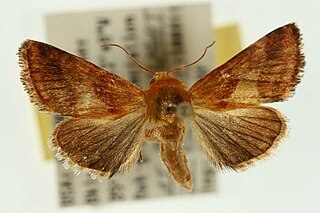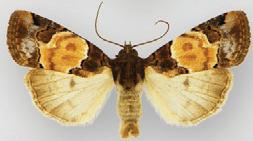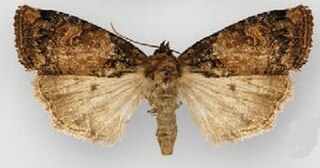
Yucca is a genus of perennial shrubs and trees in the family Asparagaceae, subfamily Agavoideae. Its 40–50 species are notable for their rosettes of evergreen, tough, sword-shaped leaves and large terminal panicles of white or whitish flowers. They are native to the hot and dry (arid) parts of the Americas and the Caribbean.

José Julián Martí Pérez was a Cuban nationalist, poet, philosopher, essayist, journalist, translator, professor, and publisher, who is considered a Cuban national hero because of his role in the liberation of his country from Spain. He was also an important figure in Latin American literature. He was very politically active and is considered an important philosopher and political theorist. Through his writings and political activity, he became a symbol of Cuba's bid for independence from the Spanish Empire in the 19th century, and is referred to as the "Apostle of Cuban Independence". From adolescence, he dedicated his life to the promotion of liberty, political independence for Cuba, and intellectual independence for all Spanish Americans; his death was used as a cry for Cuban independence from Spain by both the Cuban revolutionaries and those Cubans previously reluctant to start a revolt.

Ulmus crassifoliaNutt., the Texas cedar elm or simply cedar elm, is a deciduous tree native to south central North America, mainly in southern and eastern Texas, southern Oklahoma, Arkansas and Louisiana, with small populations in western Mississippi, southwest Tennessee and north central Florida; it also occurs in northeastern Mexico. It is the most common elm tree in Texas. The tree typically grows well in flat valley bottom areas referred to as 'Cedar Elm Flats'. The common name 'cedar elm' is derived from the trees' association with juniper trees, locally known as cedars.

Schinia varix is a species of moth belonging to the family Noctuidae. It is found in eastern Texas, central Oklahoma and Louisiana.

Bryolymnia is a genus of moths of the family Noctuidae erected by George Hampson in 1908.

Cryphia is a genus of moths of the family Noctuidae. The genus was erected by Jacob Hübner in 1818.

Batrachedra praeangusta is a moth of the family Batrachedridae which is native to Europe. It is also found in North America. It was first described by Adrian Haworth in 1828 from the type specimen found in England. The foodplants of the larvae are poplars and willows.

Arsenura armida, the giant silk moth, is a moth of the family Saturniidae. It is found mainly in South and Central America, from Mexico to Bolivia, and Ecuador to south-eastern Brazil. It was first described by Pieter Cramer in 1779.

Bryolymnia viridata is a moth of the family Noctuidae first described by Leon F. Harvey in 1876. It is found in the US in western California from Sonoma County north of San Francisco southward to San Diego County.

Bryolymnia viridimedia is a moth of the family Noctuidae first described by John Bernhardt Smith in 1905. It is found from south-eastern Arizona southward in the Sierra Madre Occidental to the Mexico City area.

Bryolymnia bicon is a moth of the family Noctuidae first described by Herbert Druce in 1889. It is found from Veracruz in central-eastern Mexico southward to Costa Rica.

Bryolymnia mixta is a moth of the family Noctuidae first described by Donald Lafontaine and J. Walsh in 2010. It is known only from the Patagonia Mountains in south-eastern Arizona.

Bryolymnia biformata is a moth of the family Noctuidae first described by Donald Lafontaine and J. Walsh in 2010. It is known only from the Huachuca, Patagonia, and Santa Rita Mountains in south-eastern Arizona.

Bryolymnia anthracitaria is a moth of the family Noctuidae first described by Clifford D. Ferris and Noel McFarland in 2007. It is known only from south-eastern Arizona where it has been collected in oak scrub grassland.

Bryolymnia poasia is a moth of the family Noctuidae first described by William Schaus in 1911. It is found in Costa Rica.

Bryolymnia semifascia, the half-banded bryolymnia, is a moth of the family Noctuidae. The species was first described by John Bernhardt Smith in 1900. It is found in the US from northern Colorado and southern Utah southward to south-eastern Arizona and south-central New Mexico.

Bryolymnia picturata is a moth of the family Noctuidae first described by William Schaus in 1894. It is found in south-eastern Mexico.

Bryolymnia ensina is a moth of the family Noctuidae first described by William Barnes in 1907. It occurs in coniferous forests from south-eastern Arizona and south-western New Mexico southward in the Sierra Madre Occidental to the state of Durango in Mexico.

Myscelia ethusa, the Mexican bluewing or blue wing, is a butterfly of the family Nymphalidae. The species was first described by Louis Michel François Doyère in 1840. It is found from Colombia north through Central America to Mexico. Strays can be found up to the lower Rio Grande Valley of Texas in the United States.

Neopalpa donaldtrumpi is a moth species of the genus Neopalpa occurring in Southern California and Northern Mexico. It was described in 2017 by Iranian-Canadian scientist Vazrick Nazari. Known for its yellowish-white head scales being reminiscent of Donald Trump's hair, the moth was given its name because Nazari stated that he wanted "to bring wider public attention to the need to continue protecting fragile habitats in the US that still contain many undescribed species."
This page is based on this
Wikipedia article Text is available under the
CC BY-SA 4.0 license; additional terms may apply.
Images, videos and audio are available under their respective licenses.













